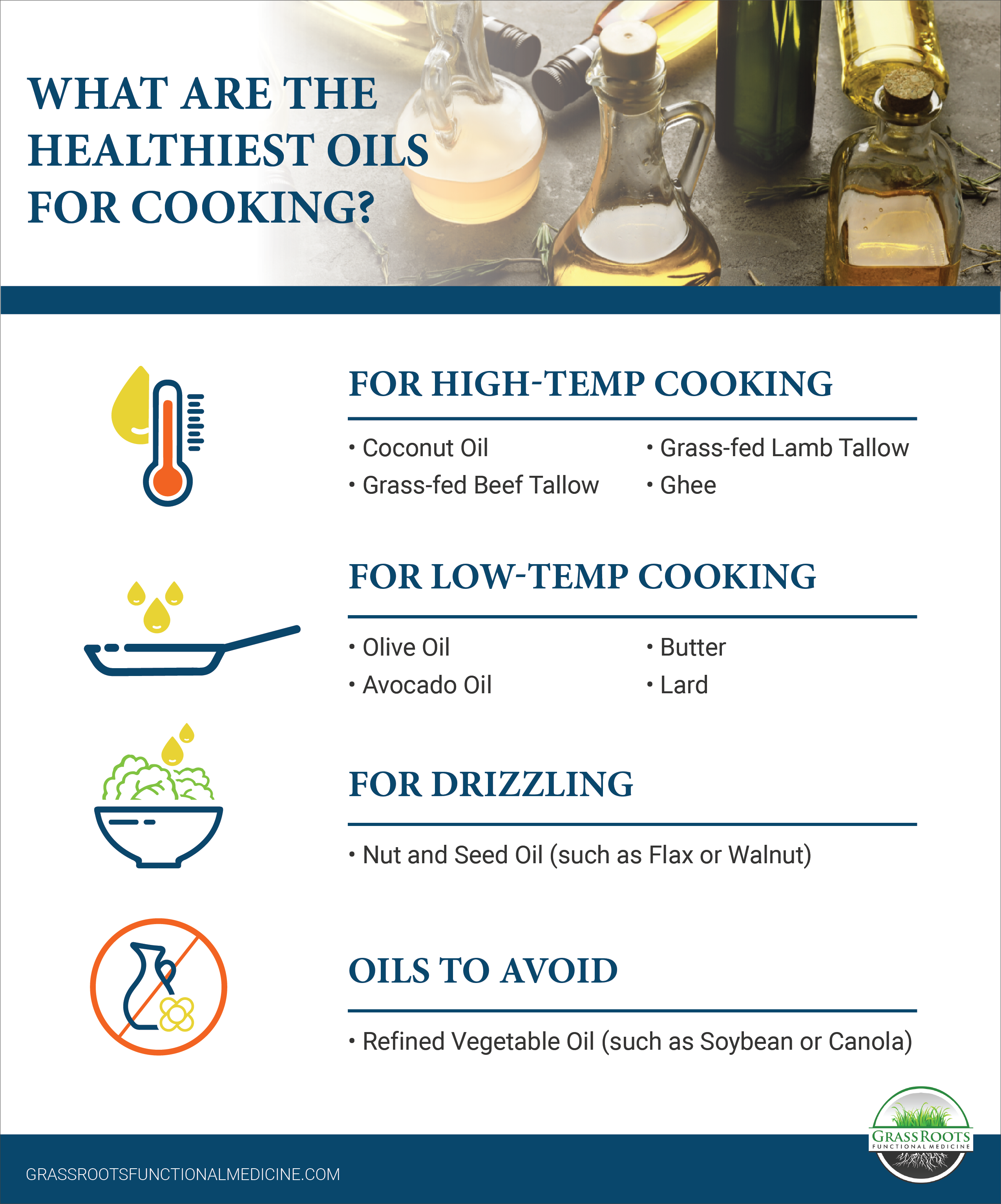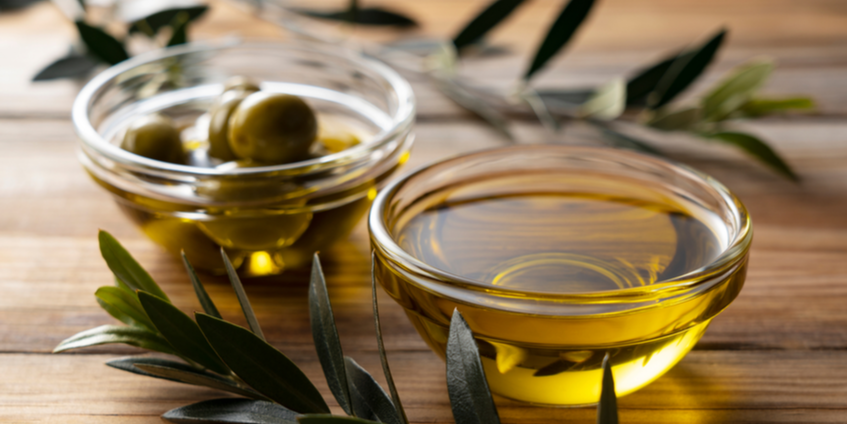With so many options on the market and all of the conflicting information on fats, it’s confusing to know which oils are healthiest for cooking. Coconut oil? Avocado oil? Vegetable oil?
I like to tell my nutrition clients that just like your car needs the oil changed periodically, the best place to start when upgrading your diet is to do an “oil change” in your pantry and fridge. It’s a small shift that can have a big impact.
Types of Fats 101
First, let’s break down the types of fats found in cooking oils and what the research says about their effect on health.
Saturated Fats
These are found in foods such as beef, coconut, and butter. If a fat is solid at room temperature and becomes hard in the fridge, it’s a good indication that it is high in saturated fats. Due to their chemical structure (the carbon atoms are fully saturated with hydrogen atoms so there are no double bonds), saturated fats are actually very heat stable and resistant to oxidation, making them a good choice for cooking.
Although saturated fats have gotten a bad rap, recent reviews of the literature have shown that saturated fat consumption is not actually the culprit behind heart disease. There’s no need to fear the saturated fats found in high quality whole foods like grass-fed meat and pasture-raised eggs.
In a small segment of the population, the mechanism that clears cholesterol from the blood doesn’t work well due to a genetic alteration, and these people may do best reducing overall fat consumption and focusing more on monounsaturated fats and whole-food carbohydrates.
Monounsaturated Fats
These are found abundantly in olives and extra virgin olive oil, avocados, macadamia nuts, and even some animal fats like pasture-raised lard. Oils rich in monounsaturated fats are liquid at room temperature but become thick when chilled (think about how olive oil becomes hard to pour out of the bottle if it has been refrigerated).
These oils are good for low temperature cooking and for adding as a dressing on top of foods. The high levels of antioxidants in unrefined, pure extra virgin olive oil protect it from oxidation, making it a good choice for cooking.
Polyunsaturated Fats
These are the most sensitive and least heat-stable of all, making them a poor choice for cooking. Polyunsaturated fats are found in nuts and seeds (walnuts, flax, chia, etc.) and also refined “vegetable” oils (more on these below). Because of their multiple double bonds, these oils are very susceptible to being oxidized. For this reason, it is best to store nuts and seeds in the refrigerator, moderate baking with nut flours, and avoid cooking sprays, margarine, and other sources of vegetable oils.
The Dark Side of “Vegetable” Oils
Although they sound healthy, vegetable oils are not actually made out of carrots and broccoli! They are refined seed oils derived from corn, canola, soybean, and cottonseed. Even before landing on our plates, vegetable oils are exposed to high heat and subjected to bleaching, deodorizing, and treatment with nickel, all of which oxide them. (If you need more motivation to avoid canola oil, watch this video showing how it is made!)
Consuming oxidized fats triggers a cascade of oxidative damage within the body that damages cell membranes, and in the blood vessels it can lead to the formation of plaque. These refined vegetable oils, along with excess refined sugar, are the true culprits behind the epidemic of cardiovascular disease.
Certain vegetable oils, including soybean, sunflower, and corn oil, are also incredibly high in Omega 6 fatty acids. These pro-inflammatory acids are beneficial in low amounts, but studies show that in excess they are linked to higher rates of heart disease, cancer, and aging.
Research also shows that it’s important to balance our ratio of Omega 3 fatty acids (which are anti-inflammatory) with Omega 6 fatty acids (which are pro-inflammatory). Our ancestors’ diet had an omega 6 to omega 3 ratio between 1:1 and 4:1. The ratio in the modern diet is 16:1.
One of the best ways to decrease your Omega 6 intake is to avoid processed oils and processed foods (which are made using these cheap oils).
Cheat Sheet for Cooking Fats: What to Use When
So, which fats are best for cooking with?
- Coconut oil, 100% grass-fed beef or lamb tallow, and ghee are best for higher temperature cooking
- Olive oil, avocado oil, butter, and lard are great for baking or lower temperature cooking
- Nut and seed oils (such as flax or walnut) should be stored in the fridge, consumed raw, and never heated
- Refined vegetable oils such as soybean and canola should be avoided altogether

Tips to Make Cooking with Oil Healthier
Any fat can oxidize if it’s heated too high for too long, so follow these tips to keep the fats in your food as healthy as possible:
- Use slow and low methods of cooking such as braising and using a slow cooker
- For frying and roasting, use the heat-stable fats listed above
- Utilize oil-free cooking methods such as steam-sautéeing veggies in a splash of water or coconut aminos or baking them without added oil
- Add healthy fats at the end of cooking before serving

About the Author: Lili Hanft is a certified Functional Nutritional Therapy Practitioner. She is passionate about the power of real food to support the body’s innate ability to heal, and she believes that nourishing ourselves with nutrient-dense foods can be a profound source of joy and empowerment.
When working with patients at GrassRoots, Lili emphasizes education on the “whys” behind nutritional recommendations, as well as support with the practical steps of dietary change.




